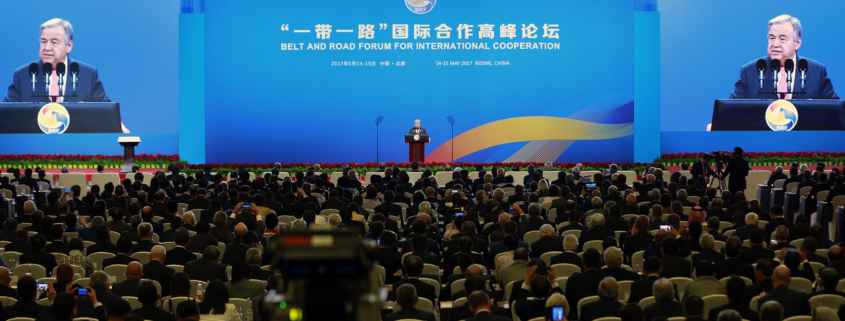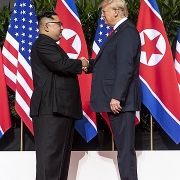A Critical Approach
As discussed in the article “China’s Belt and Road Initiative“, the Silk Road has been brought again to life under China’s Belt and Road Initiative, also known as BRI in short. This plan falls under China’s wider scope to become a leading Asian power at the global level.
In the wake of the pandemic, the world experienced multiple side effects from the imposed lockdowns; global trade suffered from cross-border restrictions, recession and an anti-Chinese movement owing to the virus originating from China.
Despite these challenges, China tackled the virus crisis faster than other countries. The global demand for health supplies and the unforeseen rise in digital commerce accelerated the Health and Digital Silk Road. This new trend allowed the Chinese expertise to export its innovation and knowledge abroad through the Belt Road Initiative.
Especially for the Digital Silk Road, the ability of the digital trade to overcome borders gave a comparative advantage to China to restore its global image and expand its global reach.
With the rebound of the global economy in the works, China released a White Paper in early 2021 reiterating the commitment to transnational cooperation. The Belt Road Initiative remains the core mechanism to stimulate global growth. To assess BRI’s potential to promote global growth, one should investigate the progress made so far under the BRI projects.
Accomplishments during the pandemic
Throughout the pandemic, the Silk Road maintained its dynamic in slow motion. The economic corridor China-Central Asia-West Asia stayed connected to 100 cities across 20 countries in Europe and Asia. In addition, China Railway Express continued to supply Europe with goods throughout the pandemic and alleviated the world supply-chain crisis.
In the Maritime Silk Road, the expansion of Mauritania’s port contributed to the advancement of the cargo capacity and the reduction of the handling process. On air, the operational improvement of airports in Pakistan, Nepal, Maldives, Cambodia, Zambia, Zimbabwe, and Togo accelerated the trade flow.
In terms of financing, the introduction to the Multilateral Cooperation Centre for Development Finance (MCDF) strengthened the BRI partnership and attracted more capital.
Despite the achievements of the BRI, some critics warned of China’s growing influence on borrowing economies. The section below covers in more detail these concerns.
Sparking international concern over the BRI
As already mentioned, some voices raised their concern over the deeper motives of the Chinese government that lie behind the BRI: a plan for global dominance at an economic, strategic, and political level.
- Economic dominance
According to OECD, Asia is in immediate need of $26tn funding to improve its infrastructure. China is already working towards this direction. Until now, South and Southeast Asia have become recipients of heavy Chinese funding; beyond this region, Central Asian and African economies have also established strong ties with the Belt Road Initiative.
The criticism towards the BRI funding model is related to the loan conditions: a) Chinese loans have a high-interest rate, in contrast with international creditors that grant low-interest loans; b) loan eligibility from China does not follow the principles of accountability and reforms, but the precondition that Chinese companies will primarily engage with project delivery; this obligation increases the influence of China on the local economies.
- Strategic dominance
Aside from the accusations of economic dominance, some circles suggest that China has strategic motives.
Although the return on investment is low or zero, China continues to finance projects. The question that arises here is why finance non-performing economies? As experts highlight, capital lending can lead to a debt crisis for underperforming economies due to their inability to pay back. Deloitte notices that more than half of the BRI countries are almost unable to repay their debt (Deloitte, 2018; quoted in Mobley, 2019: 53).
Therefore, economic development is not the only factor that drives the Chinese lending model. In exchange for financing economies, critics warn that China seeks strategic privileges; the exclusive control of key ports allows China to serve commercial and military purposes; the case of Sri Lanka and Tajikistan strengthen this argument.
Combining economic coercion and financial dependence, China exerts diplomatic influence on the borrowing state. The result is the latter to comply with the Chinese claims. As Scott Morris puts it: “in these situations, the leverage China has as a lender is used for purposes unrelated to the original loan” (Kuo and Kommenda, 2018).
- Political dominance
Going one step further from the economic and strategic purposes, some peers advocate that the goal is global dominance.
Indeed, China establishes partnerships with states based on their membership status in international and regional organisations – for instance, ASEAN and the United Nations. Such behaviour can be anything but coincidental; it constitutes a diplomatic move that allows China to obtain a strong voice in the decision making. A typical example is the United Nations, where China and its allies hold approximately 25% of the votes.
Another concern raised is the easy accessibility to advanced technology. The Chinese exports of surveillance and control systems hide the risk of falling into the wrong hands. In the name of epidemic prevention and digital transition, suppressive regimes may use such technology to serve their purposes and undermine democratic values.
The worst-case scenario of political dominance would be a cyberwar between the US and China. The deployment of Chinese technology across the globe raises suspicions of granting access to sensitive data through the cyber networks China monitors. As a defence mechanism to protect critical infrastructure, the US and its allies might resort to cyberthreats. The outcome would be catastrophic for both sides, as it would mean putting the global economy and security in jeopardy. The US rhetoric towards the Chinese BRI unravels below.
The US reaction to the Chinese BRI
Although China announced its plan to revive the Silk Road in 2013, Obama and Trump did not mention the initiative during their presidency, which many experts have estimated as a strategic mistake.
In response to China’s White Paper, the US Congress has finally released a paper in January 2021 commenting on the latest developments on the One Belt, One Road plan. The paper adopts a critical tone towards China; it pictures the BRI as an instrument to serve China’s economic development and interests in the Eurasian continent.
The most concerning factor for the United States is the outward foreign direct investment (FDI) plan that China follows. Host countries borrow capital directly from Chinese state-based banks. However, these loans are not interest-free and work in China’s favour. The involvement of state firms in foreign project funding harbours the risk of granting access to sensitive data and putting critical infrastructure in danger.
Another worrying factor is related to the debt management model. Unlike international lending institutions, China does not raise debt repayments but extends the loan duration. Subsequently, this tactic provides the means to instil financial dependency. A characteristic example is Sri Lanka. The inability of this state to repay its debt led to granting its port Hambantota operational rights to China for 99 years.
Apart from the US concerns expressed above, the Chinese vision collides also with the US plans in Eurasia. This finding exacerbates even further the troubled US-China relations. The segment ahead examines the main points of the American Silk Road plan.
The US New Silk Road plan
The most troubling part of the BRI for the United States is the penetration of Chinese interests in the traditional US influence zone. The introduction of alternative networks, trading routes and standards outside the US system of values constitutes a direct threat to American foreign policy.
Similarly, to the Chinese Belt Road Initiative, the US has also mapped out a plan known as the New Silk Road (NSR). The NSR nurtures the same aspiration as the BRI: to inject US values into Asia.
The main difference with BRI is that NSF sees Afghanistan as its anchor. Due to its geostrategic position, Afghanistan prevents Russia’s and Iran’s expansion in Asia and the Middle East. Another state of great importance for the US in India. As a regional power, the country can halt China’s influence in the continent, especially in the maritime field.
For transport connectivity, the American plan suggests the usage of the Northern Distribution Network (NDN). The network encompasses a system of existing rails and road networks that connect Europe, Russia, and Central Asia. The advantage of the NDN is its long-term use from the United States, which has securely supplied the Afghan economy with products.
Finally, NSF also includes a provision for financing, which follows a multilateral rather than a state-based model. To reduce the volume of Chinese state funds, the US created the Development Finance Corporation (DFC) for states that seek funding for their infrastructure projects. Another funding initiative the US supports is the Blue Dot Network, which provides capital support for infrastructure projects.
China’s stance against world dominance allegations
In an attempt to refute the allegations, the Chinese embassy in Sweden released a media statement. In this document, China clarifies that:
The BRI seeks “peaceful development and economic cooperation, rather than a geopolitical or military alliance”. In addition, “China will never interfere in the internal affairs of any country, never impose its own will on any country, and never place its interests above the interests of any country” (Embassy of the People’s Republic of China in Sweden, 2019).
Among other topics, the document highlights the progress made since 2013 in the BRI countries. The participating states have unlocked their trade potential through funding and lower associated costs. Hence, this proves that BRI aims to create shared benefits for all the involved parties and not only China.
Based on a World Bank study, the Belt and Road Initiative is likely to increase the GDP of East Asian and Pacific countries by 2.6 % to 3.9% on average (Embassy of the People’s Republic of China in Sweden, 2019). Recognising the potential of the BRI, international organisations have also embraced the initiative, including the United Nations, G20, APEC. By the end of March 2019, the signed agreements reached the figure of 125 countries and 29 organisations, which attests to the success of the new Silk Road.
Where opinions of sceptics and followers converge
After the careful examination and understanding of the US points towards the Belt Road Initiative, one can observe that some concerns are justified. For a fact, China can exert influence towards the BRI countries that finances. By injecting capital, it is inevitable for China to have a say in international affairs.
On the other hand, the existing criticism over the unbearable terms of the BRI loans is likely to pressure China to review the lending terms and lower the interest rates. Until now, the BRI economies that reaped the profits from this cooperation possessed sufficient infrastructure and were members of free trade zones, unlike weak economies.
Although some might disagree with the above findings, one is certain; there is a global infrastructure gap that needs addressing. Funding in Asia is still elliptic, regardless of the BRI, and requires the involvement of multiple investors to remedy the uneven distribution of wealth. The solution to this problem is the inclusion of bilateral and multilateral free trade agreements. If the BRI integrates the US and other OECD countries under its umbrella, the participating economies will reap the fruits of a free market. The following paragraphs look into the scenario of US-China cooperation.
Reaching US-China cooperation
There is no doubt that the US-China interests are justified based on their motives and visions. Despite their differences, there is common ground. First, both powers desire regional stability. And what a better way to achieve this goal by boosting global trade and restoring economic development in conflicted areas such as Africa and the Middle East.
For China, its foreign policy – beyond core interests for sovereignty and security – can be described as conciliatory and tolerant. In China’s White Paper 2021, the Chinese government pledges its commitment to continue working closely with WHO and other international organisations on research and development. This statement shows China’s goal to become more involved on the international stage; yet by cooperating and not competing with other global players.
As for the United States, a cautious strategy will need to be in place towards China’s plans. Through collaboration under the BRI, the US will participate in the decision making while also respecting China’s growing status in a region vital for its interests. In addition, the US will be able to infuse American values into the BRI agenda and intervene when and where strategic interests are undermined (Mobley, 2019).
Closing thoughts: Suggestions for an enhanced BRI model
Based on the above, the involvement of the US and other OECD countries in the BRI might be the only opportunity to establish a common ground and understanding with China. After all, the BRI model appears more advantageous than the US New Silk Road:
- The US model is based on multilateral funding but has failed to align political goals and financial commitments. On the other hand, China’s model allows the distribution of funds in countries that otherwise would have no other alternative for funding.
- Additionally, the US plan excludes Russia, while the BRI recognises the crucial role of Russia as a military power in Central Asia; China does seek to challenge Russian interests.
To summarise, it all comes down to the realisation that building a new BRI model infused with the US and Chinese principles could be the future for global peace and development. An enhanced Silk Road initiative could align the Chinese initiatives with international alliances and agreements. In addition, the United States could curve regional politics along with China under the Belt Road Initiative. Bringing two global powers under one initiative could be the diplomatic answer to future conflict prevention.
Photo: United Nations Photo. Secretary-General Addresses Belt and Road Initiative Forum, Beijing (2017).
Source: (flickr.com)| (CC BY-NC-ND 2.0)
Bibliography
Aaltola, M., & Käpylä, J. (2016) U.S. and Chinese Silk Road Initiatives: Towards a Geopolitics of Flows in Central Asia and Beyond, In H. Rytövuori-Apunen (Ed.), The Regional Security Puzzle around Afghanistan: Bordering Practices in Central Asia and Beyond, Barbara Budrich, Opladen and Toronto: 207–242, Available at: https://doi.org/10.2307/j.ctvbkjzm0.14 [Accessed 30/01/2022]
De Soyres François (2018) The Growth and Welfare Effects of the Belt and Road Initiative on East Asia Pacific Countries, Number 4, World Bank Group, Available at: https://documents1.worldbank.org/curated/en/896581540306960489/pdf/131211-Bri-MTI-Practice-Note-4.pdf [Accessed 27/01/2022]
Embassy of the People’s Republic of China in Sweden (2019) The Belt and Road Initiative Progress, Contributions and Prospects, 2019.4.22, Office of the Leading Group for Promoting the Belt and Road Initiative, Stockholm, Available at: https://www.mfa.gov.cn/ce/cese/eng/zgxw/t1675676.htm [Accessed 27/01/2022]
Gyu L. D. (2021) The Belt and Road Initiative after COVID: The Rise of Health and Digital Silk Roads, Asan Institute for Policy Studies, Available at: http://www.jstor.org/stable/resrep29688 [Accessed 28/01/2022]
Jie Y and Wallace J. (2021) What is China’s Belt and Road Initiative (BRI)? Chatham House, Available at: https://www.chathamhouse.org/2021/09/what-chinas-belt-and-road-initiative-bri [Accessed 26/01/2022]
Kuo Lily and Kommenda N. (2018) What is China’s Belt and Road Initiative, The Guardian, 30th of July, Available at: https://www.theguardian.com/cities/ng-interactive/2018/jul/30/what-china-belt-road-initiative-silk-road-explainer [Accessed 26/01/2022]
Luft G. (2017) Silk Road 2.0: US Strategy toward China’s Belt and Road Initiative, Executive Summary, Atlantic Council, Available at: http://www.jstor.org/stable/resrep16785.4 [Accessed 29/01/2022]
Mobley T. (2019) The Belt and Road Initiative, Strategic Studies Quarterly, 13 (3): 52-72, Available at: https://www.jstor.org/stable/10.2307/26760128 [Accessed 29/01/2022]
OECD (2018) China’s Belt and Road Initiative in the Global Trade, Investment and Finance Landscape, OECD Business and Finance Outlook 2018, Available at: https://www.oecd.org/finance/Chinas-Belt-and-Road-Initiative-in-the-global-trade-investment-and-finance-landscape.pdf [Accessed 28/01/2022]
Peel M. and Fleming S. (2021) West and allies relaunch push for own version of China’s Belt and Road, The Financial Times, May, Available at: https://www.ft.com/content/2c1bce54-aa76-455b-9b1e-c48ad519bf27 [Accessed 27/10/2022]
Ruta M. (2018) Three Opportunities and Three Risks of the Belt and Road Initiative, World Bank Blogs, 4th of May, Available at: https://blogs.worldbank.org/trade/three-opportunities-and-three-risks-belt-and-road-initiative [Accessed 27/01/2022]
Sutter K., Schwarzenberg A. and Sutherland M. (2021) China’s “One Belt, One Road” Initiative: Economic Issues, IF11735, Version 2, Congressional Research Service, 22th of January, Available at: https://crsreports.congress.gov/product/pdf/IF/IF11735(Accessed 27/01/2022)
The State Council The People’s Republic of China (2021) China’s International Development Cooperation in the New Era, White Paper, The State Council Information Office of the People’s Republic of China, 10th of January, Available at: http://english.www.gov.cn/archive/whitepaper/202101/10/content_WS5ffa6bbbc6d0f72576943922.html [Accessed 27/01/2022]






 176th Wing Alaska Air National Guard's photostream
176th Wing Alaska Air National Guard's photostream 


Leave a Reply
Want to join the discussion?Feel free to contribute!